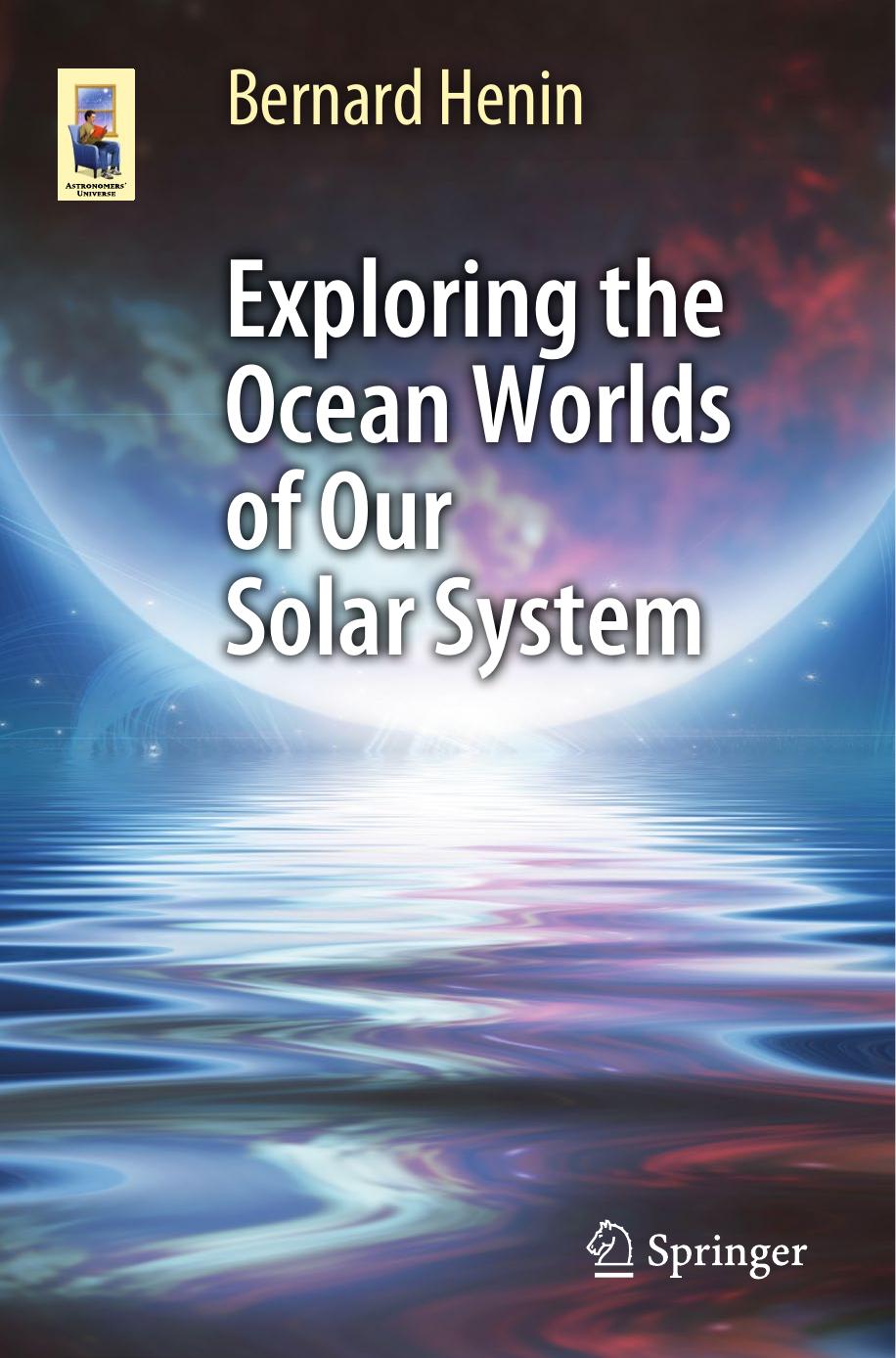Exploring the Ocean Worlds of Our Solar System by Bernard Henin

Author:Bernard Henin
Language: eng
Format: epub, pdf
ISBN: 9783319934761
Publisher: Springer International Publishing
The Atmosphere
As with many satellites in our Solar System, Titan was a strange curiosity for hundreds of years. Apart from noting that it had an orange tinge, unique among the moons, nothing more could be inferred due to the technological limitations of the times. It would be anyone’s guess what Titan might be like. Then, in 1907, the moon came back into the spotlight when the prominent Spanish astronomer Josep Solà claimed to have observed limb darkening (when a planetary body appears darker at its edge or limb), inferring the presence of an atmosphere. This seemed dubious as he had already claimed the same for the Galilean moons as well, which possessed no such atmosphere. Nevertheless, astronomers’ interest was piqued, and in 1925, Sir James Jeans , a brilliant British astronomer, worked on the theoretical study of escape processes in atmospheres around planetary objects. The study included Titan as well as the Galilean moons , and he found that despite its weak gravity, Titan could, in theory, have an atmosphere if its surface temperatures were very low, around 60 K to 100 K. He had calculated that at this temperature range, gases that had a molecular weight of 16 or higher would not be able to reach escape velocity (when they can escape the moon’s gravity) and therefore form an atmosphere around the moon. These gases included ammonia , argon, neon, nitrogen , and methane .
Furthermore, he predicted that if an atmosphere did indeed exist on Titan, it would be mainly composed of methane, argon, and neon. With methane being more easily detectable through an infrared spectrum than argon and neon (they have weaker absorption bands), he suggested that methane would be the first gas to be detected on Titan once the technology would permit such observations in the decades to come.
To grasp Sir Jeans ’ remarkable insight, we need to step back and understand the conditions required for atmospheres to form on small planetary bodies.
In Chapter 2, we explained how, during the formation of our Solar System, most gaseous elements close to the Sun couldn’t condense due to the star’s radiating energy and were blown away by solar wind. Water, methane , nitrogen , and other volatiles got nudged out of the inner Solar System, which explains why the inner planets (Mercury, Venus, Earth, and Mars) are mostly composed of rocks and metals (hence the term terrestrial planets to describe them).
The water and other volatile compounds that currently exist on Earth, Venus, and Mars were not present when these planets were formed but were instead deposited later by comets and ice-rich asteroids. Once the terrestrial planets took stock of their newly added volatile compounds, they hosted surface oceans and were enveloped by thick atmospheres (mostly composed of nitrogen gas) . Thankfully for us, Earth’s magnetosphere, as well as geological and biological activity present within our planet, helped sustain the oceans and atmosphere throughout billions of years. Mars and Venus, on the other hand, were unlucky. The nitrogen and other
Download
Exploring the Ocean Worlds of Our Solar System by Bernard Henin.pdf
This site does not store any files on its server. We only index and link to content provided by other sites. Please contact the content providers to delete copyright contents if any and email us, we'll remove relevant links or contents immediately.
| Acoustics | Bridges |
| Earthwork Design | Environmental |
| Fire Science | Highway & Traffic |
| Hydrology | Remote Sensing |
| Seismic Design | Structural |
| Structural Dynamics | Surveying & Photogrammetry |
| Transportation |
Whiskies Galore by Ian Buxton(41867)
Introduction to Aircraft Design (Cambridge Aerospace Series) by John P. Fielding(33064)
Small Unmanned Fixed-wing Aircraft Design by Andrew J. Keane Andras Sobester James P. Scanlan & András Sóbester & James P. Scanlan(32743)
Craft Beer for the Homebrewer by Michael Agnew(18140)
Turbulence by E. J. Noyes(7935)
The Complete Stick Figure Physics Tutorials by Allen Sarah(7307)
Kaplan MCAT General Chemistry Review by Kaplan(6866)
The Thirst by Nesbo Jo(6826)
Bad Blood by John Carreyrou(6543)
Modelling of Convective Heat and Mass Transfer in Rotating Flows by Igor V. Shevchuk(6391)
Learning SQL by Alan Beaulieu(6208)
Weapons of Math Destruction by Cathy O'Neil(6141)
Man-made Catastrophes and Risk Information Concealment by Dmitry Chernov & Didier Sornette(5921)
Digital Minimalism by Cal Newport;(5661)
Life 3.0: Being Human in the Age of Artificial Intelligence by Tegmark Max(5474)
iGen by Jean M. Twenge(5366)
Secrets of Antigravity Propulsion: Tesla, UFOs, and Classified Aerospace Technology by Ph.D. Paul A. Laviolette(5309)
Design of Trajectory Optimization Approach for Space Maneuver Vehicle Skip Entry Problems by Runqi Chai & Al Savvaris & Antonios Tsourdos & Senchun Chai(5011)
Electronic Devices & Circuits by Jacob Millman & Christos C. Halkias(4907)
